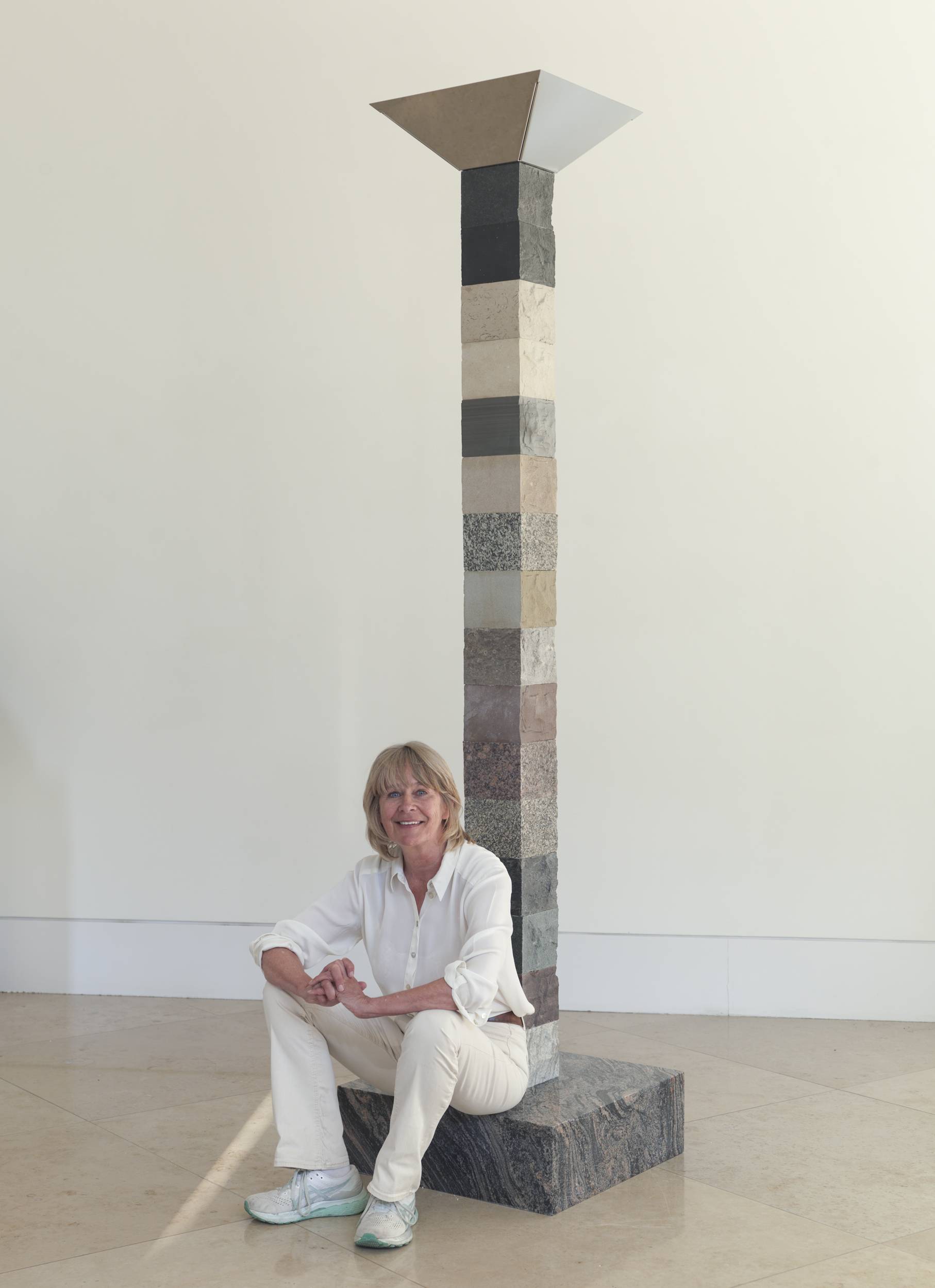Some of the earth’s older materials from Scotland which date back billions of years are being featured in a major sculpture exhibition.
Scottish artist Angela Palmer’s latest exhibition Deep Time: Uncovering Our Hidden Past will tell the three-billion-year history of the UK through the rocks that lie unnoticed beneath our feet.
Angela, who previously transported enormous rainforest tree roots from Africa to Trafalgar Square for a landmark environmental installation, uses ancient rocks sourced from around the UK.
One of the exhibition highlights is Tower of Time, a 2.5m high colum.
The sculpture features 16 rocks from Scotland, England, Wales and Northern Ireland, with the most ancient as its base, a three-billion-year-old Lewisian Gneiss from the Isle of Barra, which is two thirds the age of the Earth.
It is followed by a 2.5-billion-year-old White Anorthosite rock which Angela purchased from a disused quarry on the Isle of Harris.
It is the same type of rock found on the Moon, and brought back by the Apollo 15 mission in 1971.
Other Scottish rocks include pink granite from the Scottish Highlands, which are 425 million years old, Gneiss from Morayshire and Torridonian Sandstone, which date back 1 billion years.

Angela Palmer with Tower of Time. Credit: Ewa McBride Photography
Some 230 million year old Aeolian Sandstone will also be used in the exhibition, alongside Acochie Granite from Aberdeen at 470 million years old.
Visitors can see, touch and interact with rocks which are part of the exhibition at Pangolin Sculpture Gallery in London.
Alongside the tower will be Torus of Time, a spectacular one-metre diameter ring presenting the country’s three-billion-year history as a ‘circle of time’.
‘It is not about what divides us but what makes each nation different, what gives it its own identity and character,’ Angela said.
‘When I began this project I had no idea that our country originated near the South Pole, and that for billions of years Scotland and Northern Ireland enjoyed an entirely separate existence on a different continent to England and Wales.
‘It was only when the tectonic plates shifted that they collided and were physically united, just south of the Equator, 425m years ago.
‘England and Scotland were “stitched” together as a united country at roughly the same location as today’s Anglo-Scottish border.
‘I hope observers will unlock their imaginations and allow themselves to be propelled to the South Pole where the most ancient of these rocks in this exhibition began their journey – a silent world with little oxygen, with no trees nor fish nor birds nor beasts.
The exhibition will run until 16 September.
Read more on Scottish Field’s News pages.
Plus, don’t miss the July issue of Scottish Field magazine.
TAGS

